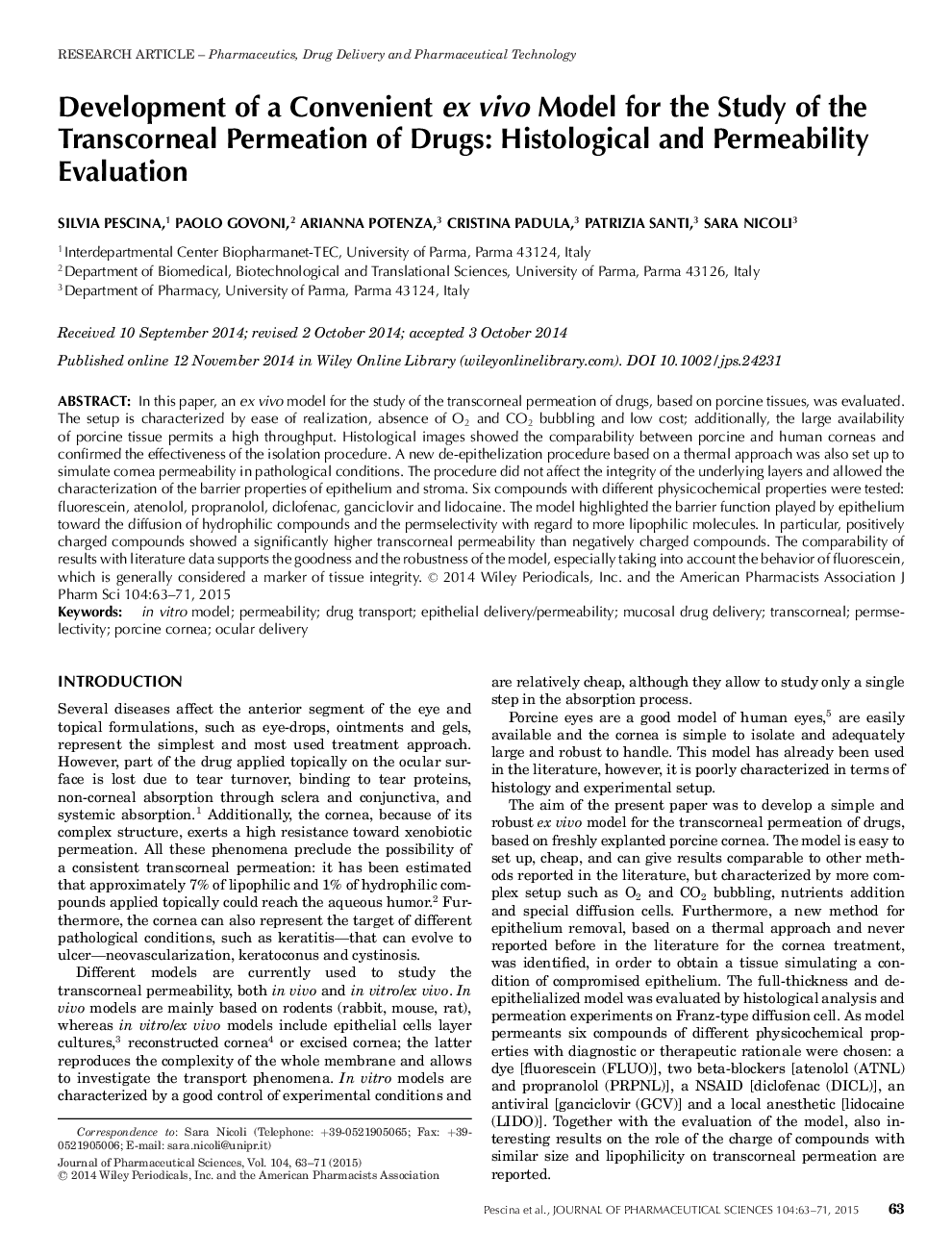| Article ID | Journal | Published Year | Pages | File Type |
|---|---|---|---|---|
| 2484622 | Journal of Pharmaceutical Sciences | 2015 | 9 Pages |
Abstract
In this paper, an ex vivo model for the study of the transcorneal permeation of drugs, based on porcine tissues, was evaluated. The setup is characterized by ease of realization, absence of O2 and CO2 bubbling and low cost; additionally, the large availability of porcine tissue permits a high throughput. Histological images showed the comparability between porcine and human corneas and confirmed the effectiveness of the isolation procedure. A new de-epithelization procedure based on a thermal approach was also set up to simulate cornea permeability in pathological conditions. The procedure did not affect the integrity of the underlying layers and allowed the characterization of the barrier properties of epithelium and stroma. Six compounds with different physicochemical properties were tested: fluorescein, atenolol, propranolol, diclofenac, ganciclovir and lidocaine. The model highlighted the barrier function played by epithelium toward the diffusion of hydrophilic compounds and the permselectivity with regard to more lipophilic molecules. In particular, positively charged compounds showed a significantly higher transcorneal permeability than negatively charged compounds. The comparability of results with literature data supports the goodness and the robustness of the model, especially taking into account the behavior of fluorescein, which is generally considered a marker of tissue integrity. © 2014 Wiley Periodicals, Inc. and the American Pharmacists Association J Pharm Sci 104:63-71, 2015
Keywords
Related Topics
Health Sciences
Pharmacology, Toxicology and Pharmaceutical Science
Drug Discovery
Authors
Silvia Pescina, Paolo Govoni, Arianna Potenza, Cristina Padula, Patrizia Santi, Sara Nicoli,
